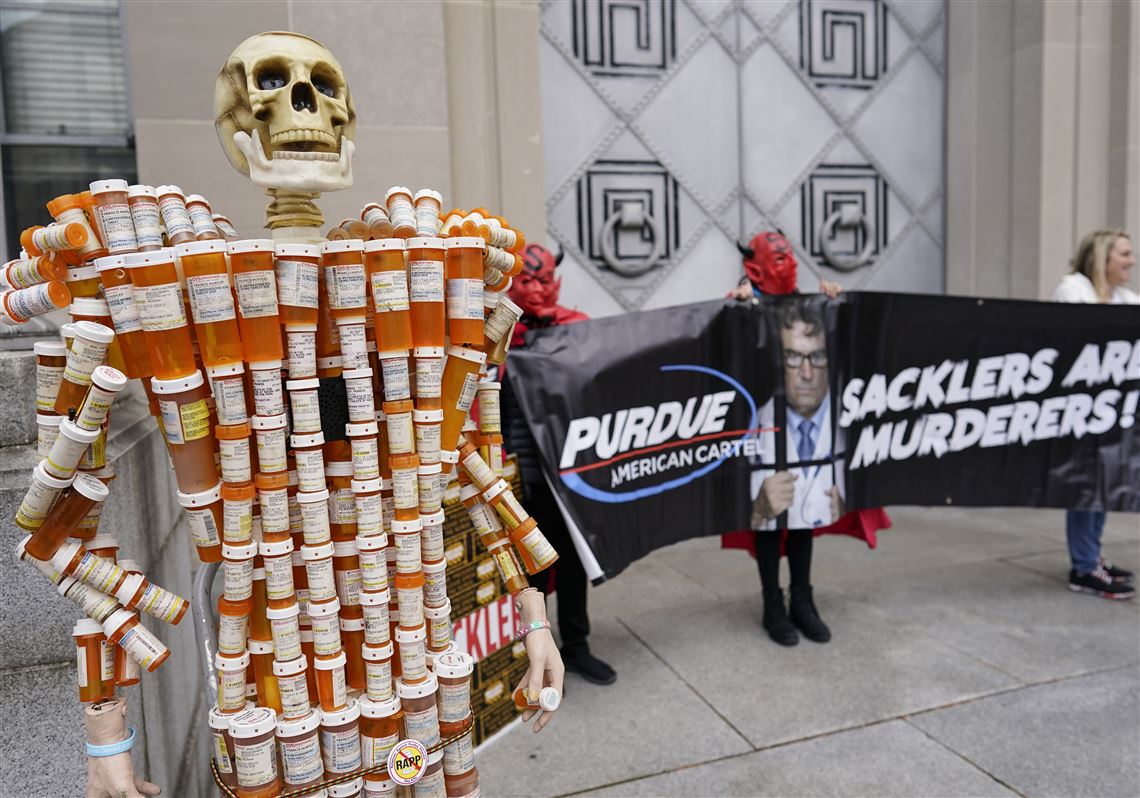Pennsylvania governments will receive and distribute over $1 billion in funds from the historic settlement with opioid companies that juiced the epidemic of addiction. This once-in-a-lifetime opportunity to slow the tide of death and despair must not be wasted. We will never have this much money again.
That means that those deciding how this public money will be spent must be completely transparent in what decisions they make and why they make them, and must be accountable for any failures.
The Pennsylvania Opioid Misuse and Addiction Abatement Trust continues to fail to be completely transparent, while holding counties accountable for their use of settlement funds with no public reasoning, often making its decisions after-the-fact.
In Western Pennsylvania, some appropriations in outlying counties have been rejected by the trust, and others raise questions about whether the windfall is being put to the most effective uses.
Exhibit E
Overall, the state’s system of distributing and tracking opioid settlement funds lacks the structures needed to ensure their efficacy. Transparency and accountability are the only way to ensure that opioid crisis settlement funds continue being targeted directly at fixing this crisis — and not towards unsuccessful treatments or filling unrelated budget gaps or boosting law enforcement.
The approved methods for spending this money are contained in an expansive document called Exhibit E. It gives counties broad latitude to decide what expenditures would do the most good in their particular circumstances, and that’s good.
For example, it allows indirect spending to tackle the crisis, such as paying for patients’ transportation to opioid treatment programs or researching non-opioid methods to treat chronic pain.
But not every treatment Exhibit E allows is actually effective. Specifically, some methods for “prevention” are proven to work and others just assumed or hoped to be helpful, and some of those will fail.
Counties must prove the effectiveness of the programs they fund — tracking how many people they work with and their outcomes — or lose the funding. Organizations that work with people with opioid use disorder must show how many clients they successfully get into legitimate treatment protocols.
That’s the only way to distinguish programs that help people from those that don’t. Some funded programs in Western Pennsylvania might not check all the experts’ boxes, but may still have success in their communities.
Does it work?
For example, Westmoreland County has spent nearly $60,000 to resurrect the 1980s anti-drug curriculum Drug Abuse Resistance Education, or DARE. Given the program’s long history of mediocre (at best) results, the county needs to prove that it helps the people in the program, and does so as effectively as others.
The most curious expenditure may be Butler’s $100,000 for the Hope is Dope community outreach program, through Butler County Community College. The current and only instructor, Steve Treu, runs an organization called Quantum Revolution Counseling, where he teaches well-being on the basis of ancient occult texts.
While the Emerald Tablet (or energy healing or anything of the sort) generally does not appear among public health best practices, it’s possible — and community media reports suggest this may be the case — that Mr. Treu’s personal charisma and community-building efforts really do make a difference for his clients.
Even so, Butler County, and other counties, must ask for real, documented results before ponying up more funding. That means detailed information on what the funds were actually used for and statistical analysis of clients. Programs need to show that the money allowed them to serve more people and that their drug use was reduced and their lives were actually improved.
Unfortunately, some counties’ accounting of their own spending has already been lackluster. Paperwork filed with the Opioid Trust often has blank fields, including in the all-important description of intended uses for funds. The Trust must be clear with counties about its expectations — and then enforce them by withholding or retracting funds.
Trusting the Trust
One county where the Trust’s enforcement has already been visible is Lawrence. There, $17,000 went to upgrade information systems in five Mahoning Township police cruisers. The district attorney installed high-tech traffic cameras for $140,000. Another $41,000 was invested in different types of drug and toxicology tests for the coroner’s office.
These payments don’t support victims of opioid addiction and the the Opioid Trust rightly rejected them. However, the Trust does not publicly explain its decisions, leaving other counties to guess at its reasoning and make decisions accordingly. More precise and public guidance would be helpful to decision-makers and to the public.
This is part of a pattern of opacity at the Trust, which has already brazenly skirted Sunshine Law provisions in its deliberations. It’s hard to demand transparency and accountability from county governments when the board tasked with overseeing them violates these principles itself.
After rejection, counties have up to three months to “cure” the improper spending. Otherwise, the Trust can reduce or withhold payments going forward, and instead direct the money to accounts controlled by other government officials. It is unclear if Lawrence County will have to refund the monies it already spent, since the Trust only rejected the 2023 expenditures last month.
There are points of light. As we have previously observed, several counties are using the funds to enhance medication-assisted treatment in their jails. And other established, evidence-based programs are getting needed boosts, including harm-reduction approaches.
But many counties’ spending, and the Trust’s management, remains haphazard. Without more structured accountability, at the local and state level, Pennsylvania will look back on this moment as a tragic missed opportunity to heal and to save people and communities.
First Published: June 20, 2024, 9:30 a.m.















